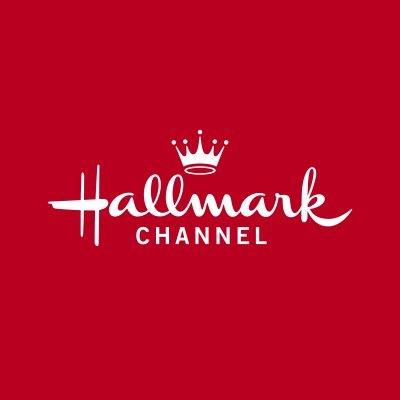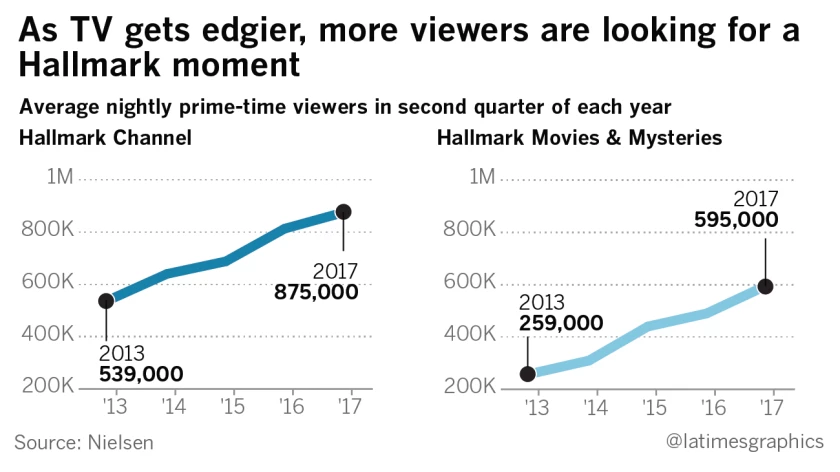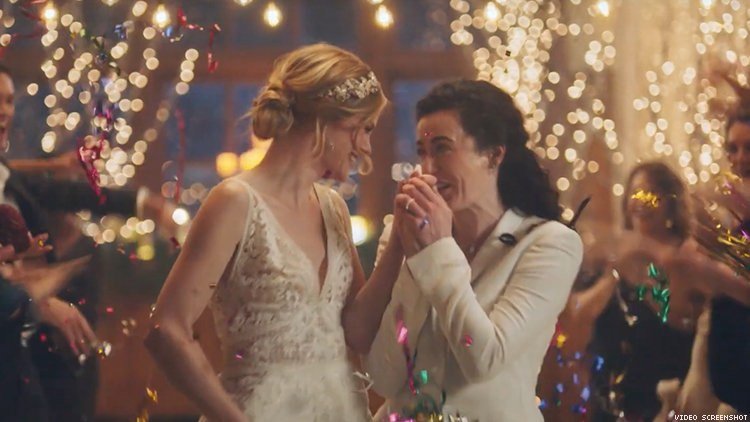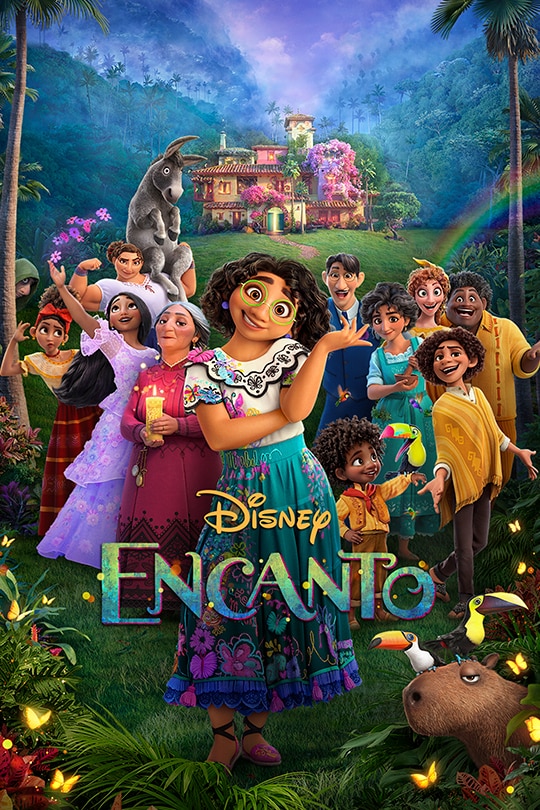Hallmark Unwrapped: Analyzing the History & Politics of the Hallmark Channel
Once the snow starts to fall on the ground, the smell of baked goods fills the air, and the bells of Christmas start to ring, the image of the trademark Hallmark Channel movie comes to mind. With the beginning of the season, the channel has begun its annual Countdown to Christmas, where they not only release new original holiday movies but show their classic Christmas favorites for over two months. But while watching yet another city girl learn what the true meaning of Christmas is from a country boy, the questions of how Hallmark became such a calling card for the holidays may come to mind- along with why so many of their movies have a city girl and country boy. By detailing of their history, along with key characteristics of the channel and their content, these questions are analyzed in their full extent, with an additional question of what the future holds for the Hallmark Channel.

What Was The Hallmark Channel Like Before It Was Popular?
Before going into the content produced on The Hallmark Channel, there’s quite a bit of history on how it came to be. The Hallmark Channel is owned by Crown Media Holdings inc., which is, in turn, owned by Hallmark Cards; that’s how the name and logo came to be. The channel was first founded in 1992 as a collaboration between 2 religious tv channels: the American Christian Television System (ACTS) and the Vision Interfaith Satellite Network (VISN), with the combined name of VISN/ACTS. These channels, of course, primarily focused on religious tv programming, with the majority of it being evangelical. Through time and transition to other owners and channel names, the channel began to add more and more secular programming, though it remained “family-oriented.” It wasn’t until 2000 that the channel released its first-holiday movie, and in 2001, the channel was rebranded as “The Hallmark Channel.”

What Is Hidden Under The Family Friendliness of Hallmark?
As previously mentioned, The Hallmark Channel focuses itself on being a “family friendly” brand, as apparent with its plethora of Christmas movies; the majority feature family, community, and love within their storylines. But while the story of how city girl moved back to her small town to be with her family and new love interest, country boy, seems innocent enough, the actual stories that these movies tell are lined with more conservative romance narratives that include the reinforcement of gender norms, heteronormativity, and other features of what a “traditional” life should look like. While these movies have a target audience of women in middle America between 25-54 years old, the majority being White women, a more conservative audience is attracted. Instead of providing an escape from the harsh realities of the world, especially politics, The Hallmark Channel does its best where the political climate matches the values promoted in their movies. The channel gained popularity in 2017, whereas every other primetime cable network declined because of the political climate; there is even a study cited within the LA Times article below that details the similarities between the electoral college map from the 2016 election and tv viewership, with red states favoring more conservative tv programming, including tv/movies from The Hallmark Channel. It seems to hide under the guise of being a “family-friendly” brand to promote what many would think of as an “ideal America,” a country where women leave their high-powered careers to start a family.

What Can We Conclude?
Though the preferences of its conservative audience initially guided the channel, recently, there has been some change for the better in its programming guidelines. In December of 2019, The Hallmark Channel stopped airing ads for Zola.com, an online wedding registry, due to complaints that the ads featured a lesbian couple. The main complaints came from the organization One Million Moms, a division of the American Family Association; this specific group is designated as an anti-LGBTQ+ hate group by the Southern Poverty Law Center. As a result, there was a call across social media for a boycott of The Hallmark Channel, with competitors such as Netflix and Freeform advertising the LGBTQ+ inclusivity within their content. Eventually, all these pressures led The Hallmark Channel to reverse their decision and announce a partnership with GLAAD, an LGBTQ+ media monitoring organization, to help create more inclusive tv programming for the channel. The most significant result of this effort was presented during the series finale of The Good Witch, aired in July of 2021, that featured the first lesbian kiss in a Hallmark original production.
Conclusion
Before you start your annual binge of Hallmark movies, pay a little more attention and ask yourself what, if anything, you see in the plots, casts, and other details of the films. Though the history of Hallmark or its programming guidelines won’t jump out at you during the middle of a Christmas-cookie baking montage, there’s still bound to be hints at gender norms and other traditionally conservative values when city girl kisses country boy, and so many other questions waiting to be answered.



